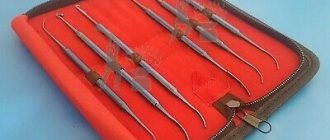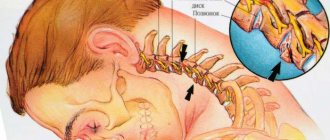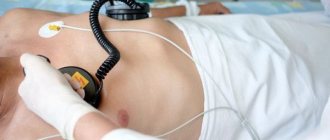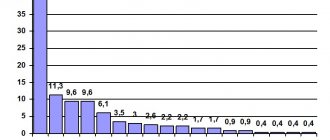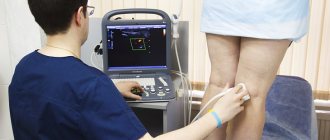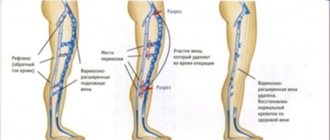Venectomy: what is it?
One of the most common vascular operations is venectomy - removal of superficial veins in the legs with redirection of blood outflow into the deep main vessels. The procedure is prescribed for advanced varicose veins.
Venectomy is a low-traumatic operation and is easily tolerated by patients. However, this is a rather radical method, which is prescribed when absolutely necessary.
Contraindications for venectomy are:
- infectious and inflammatory processes in the legs;
- deep vein thrombosis;
- pregnancy, breastfeeding period.
There are quite a few methods of venectomy in modern surgery: according to Babcock, Narat, Troyanov-Trendelenburg. The method of performing the operation is selected individually, based on the patient’s indications and complaints. Regardless of the technique, the procedure is performed in stages:
- Ligation of the great saphenous vein.
- Excision of the problematic vessel through a small incision in the groin area.
- Removal of a pathological vein using a vein extractor probe.
- Treatment of perforated veins.
Venectomy can be complemented by other therapeutic techniques by introducing sclerosants.
Why is miniphlebectomy necessary?
With this procedure you can get rid of virtually any varicose veins.
And in some cases, even remove the trunk of the GSV (great saphenous vein) on the lower leg and eliminate the altered areas of the SSV (small saphenous vein). As an independent operation, miniphlebectomy allows you to get rid of varicose veins affected by the tributaries of the saphenous main veins in the absence of both horizontal and vertical reflux. But if one occurs, then phlebectomy is first used. This combination has an excellent cosmetic effect.
Endovascular laser ablation
EVLT is a modern method of combating varicose veins using a laser. The operation is low-traumatic and therefore absolutely painless. EVLT is prescribed for:
- elimination of cosmetic defects in the form of varicose veins;
- elimination of pathological symptoms;
- preventing lymphovenous stagnation;
- prevention of complications (thrombosis, trophic skin defects, ulcers, pigmentation, etc.).
Contraindications to EVLT are:
- inflammation of the skin at the site of the planned operation;
- ischemia, heart attack, stroke;
- pulmonary failure;
- infectious diseases;
- pregnancy and lactation.
Endovascular ablation in the ACMD clinic is carried out using a radial high-tech laser under continuous ultrasound control. A probe with a laser emitter is inserted into the lumen of the affected vessel through a small puncture, which seals the walls of the vessel.
EVLT can be combined with miniphlebectomy, which allows you to achieve the desired therapeutic result without significant tissue trauma. The procedure takes place quite quickly (from 40 minutes to 1 hour) and is accompanied by a short rehabilitation period without the risk of bleeding, tissue scarring and the appearance of scars.
How to prepare for the procedure
Before undergoing surgery, it is worth examining and consulting with a phlebologist and, possibly, doing an ultrasound. If the doctor confirms the need and possibility of the operation, the patient can begin directly to prepare for phlebectomy.
The operation itself to remove varicose veins, as well as the preparation for it, is simple. The patient will only need to shave his legs and do cleansing enemas. The skin of the legs should be clean, not affected by pustular diseases.
If you are taking any medications or have an allergic reaction to them, you must inform your doctor about this.
Miniphlebectomy: the essence of the procedure
Miniphlebectomy is the removal of varicose veins through small punctures in the skin under local or general anesthesia. Indications for surgery are:
- phlebeurysm;
- thrombophlebitis and thrombosis;
- varicose nodes.
Miniphlebectomy is not performed during pregnancy, lactation, or in the presence of acute chronic heart disease, pulmonary insufficiency, infectious diseases and hypertension.
The operation is performed through very small (up to 2 mm) punctures in the skin, after which there are no scars. After the procedure, it is recommended to wear compression stockings and be observed by a phlebologist for 1 year.
Postoperative period
Mini punctures in the skin heal on their own and do not require stitches. There are no scars or scars left as the incision diameter is extremely small.
After surgery, it is enough to wear elastic medical knitwear or special bandages for 3-4 weeks. The wounds are closed with adhesive stickers. After the specified time, the patient comes for a follow-up examination.
Pain during the rehabilitation period is either mild or completely absent, so painkillers are not required. But if discomfort still occurs, the doctor prescribes drugs from the group of anti-inflammatory non-steroidal drugs or paracetamol. The course of treatment is 1-2 days.
Sclerotherapy for varicose veins
Sclerotherapy is an innovative method of treating vascular diseases, based on the introduction of chemical sclerosants into the vascular lumen, which cause the walls to weld together and the subsequent natural resorption of the vein. The technique has almost no contraindications, is accompanied by a minimal risk of complications, and is easy and painless for patients. The operation is performed without incisions, so there are no scars left after the operation.
Indications for sclerotherapy are:
- varicose veins;
- telangiectasia (“stars” of small vessels);
- varicose veins in reticular form;
- benign tumor neoplasms in the vascular and lymphatic systems.
Sclerotherapy is not performed during pregnancy, lactation, or if you are allergic to sclerosing drugs. The individual reaction to sclerosing agents is checked in advance. Other contraindications for therapy are:
- severe atherosclerosis;
- active thrombophlebitis;
- repeated thromboses in the past;
- congenital and acquired severe heart diseases;
- inflammatory and infectious skin diseases at the site of surgery.
For sclerotherapy, ultra-thin sterile needles with a diameter of 0.2-0.5 mm are used. There is no pain during the procedure, there may only be slight discomfort, which is eliminated with local anesthesia. Injections are administered into pre-marked areas. Several punctures can be performed in one procedure (3-5 for main forms of varicose veins, 10-15 for multiple manifestations of varicose veins). A sclerotherapy session lasts 10-25 minutes. Depending on the severity of the pathological process, from 1 to 5 sessions may be required.
The specialists of the ACMD clinic will select the optimal treatment method for each patient. Come to the ACMD clinic to get rid of vascular diseases once and for all!
Risks of the procedure
Complications can arise both immediately after the operation and after some time. During the postoperative period, a number of problems may arise, such as:
- Decreased sensitivity due to damage to skin nerves
- Numbness of the ankle and inner calf
- Suppuration
- Bleeding
- Damage to varicose veins located both near the scar and outside it
- Soreness in areas that have undergone surgery.
During laser phlebectomy, the color of the skin in the area of the operation may change, as well as bruising.
Venectomy method
The invention relates to vascular surgery and is intended for venectomy for varicose veins. Incisions are made above the tributaries of the vein, 2-3 mm long, throughout the entire varicose vein. The vein loop is removed and divided. A needle with a ligature is inserted into the section of vein between the two incisions. A vein is wound onto a ligature in the form of a tourniquet, rotating its ends in the opposite direction. After this, the vein is removed. The method allows you to prevent rupture when removing the affected vein. 3 ill.
The invention relates to the field of medicine, specifically to vascular surgery, and is intended for venectomy for varicose veins.
There is a known method of venectomy according to Narat, which consists in making skin incisions measuring 1-2 cm along the course of the altered vein every 5-10 cm. The vein, after being isolated in an open wound, is grabbed with two clamps, crossed between them and both segments are isolated as much as possible in the direction of other similar ones incisions where the same manipulations are carried out, after which a segment of the vein is removed from the subcutaneous tissue (Phlebology. / Edited by V.S. Savelyev. M.: Medicine, 2001, p. 481). The disadvantage of the known method is that the size of the wounds quite large, they require sutures, and postoperative scars are cosmetically detrimental. There is a known method of venectomy from mini-accesses of 2-3 mm. In this case, the skin is punctured with a pointed scalpel, after which the hole is widened with a spatula. Next, the vein is lifted with one phlebodissector, and its posterior surface is mobilized with the second, pulling out the accessible portion in the form of a loop. Between two clamps, the vein is crossed and removed along the length, winding it onto the clamp. The next mini-access is performed at the site of skin retraction, determined by pulling the peripheral segment of the vein, and the procedure is repeated (Phlebology. / Edited by BC Savelyev. M.: Medicine, 2001, p. 481). The disadvantage of this method is the possible breakage of varicose veins with thinned the wall of the vein during extraction, leaving part of the unremoved vein in the subcutaneous tissue and bleeding from it. The objective of the invention is to prevent rupture when removing the affected vein. This problem is solved by the fact that in the venectomy method, including 2-3 mm incisions along the varicose vein, the extraction of loops veins and their intersection on a segment of the vein, a needle with a ligature is passed coaxially between two incisions, onto which the vein is wound in the form of a tourniquet, rotating its ends together with the ligature in the opposite direction, after which it is removed, with each incision made above the tributary of the vein. In Fig. .1-3 schematically shows the method of venectomy, where 1 is a vein, 2 is a tributary, 3 is a mini-access, 4 is a vein loop, 5 is a needle, 6 is a ligature, 7 is the direction of extraction. The method is carried out as follows. Using incision 3, 2-3 mm long, using Ash hooks, loop 4 of the dilated saphenous vein is removed and crossed. By pulling the crossed end of the vein, the localization of inflow 2 is determined by the characteristic retraction. A second microaccess is made above it in a similar way. Another loop 4 of the same vein 1 is drawn through it and crossed. From one microaccess to another along the axis and through the vein itself, a ligature 6 is passed using a straight needle 5. The removed segment of the vein is bundled and reinforced along its entire length by repeated rotation around the vein’s own axis together with the ligature. Moreover, the rotation of the ends of the crossed veins is carried out simultaneously on both sides of the removed segment in opposite directions. As a result, a strong tourniquet is formed from the removed segment of the vein, mobilized from the surrounding tissue. Upon completion of this procedure, a segment of the vein is removed through one of the micro-accesses 3. The following segments of the vein are removed in the same way. Example: Patient M., 32 years old, was routinely operated on June 14, 2001 for varicose veins with a predominant lesion of the saphenous veins on the left. From the inguinal approach, a 2 cm incision exposed the mouth of the great saphenous vein. A crossectomy was performed. For catheter sclerosis of the trunk of the great saphenous vein, a catheter was inserted retrogradely along the entire length of the leg. The dilated tributaries on the lower leg and thigh were removed from micro-accesses as follows. With a 2-3 mm incision, using Ash hooks, a loop of the dilated saphenous vein is brought out and crossed. After 17 cm, another loop of the same vein is brought out in a similar way through the second microaccess and crossed. A ligature is passed from one microaccess to another along the axis and through the vein itself using a straight needle. The removed segment of the vein was bundled and reinforced along its entire length by repeated rotation around the vein’s own axis together with the ligature. Moreover, the rotation of the ends of the crossed veins is carried out simultaneously on both sides of the removed segment in opposite directions. As a result, a strong tourniquet is formed from the removed segment of the vein, mobilized from the surrounding tissue. Upon completion of this procedure, the vein segment is removed through one of the micro-accesses. The following segments of the vein are removed in the same way. The operation was completed with the introduction of a 2% solution of ethoxysclerol through the catheter as it was removed and the application of a pressure bandage. The postoperative period was without complications. She was discharged in satisfactory condition for outpatient observation.
Claim
A method of venectomy, including incisions above the tributaries of the vein 2-3 mm long throughout the entire varicose vein, extraction of a loop of the vein and its intersection, characterized in that a needle with a ligature is passed on the segment of the vein between the two incisions, onto which the vein is wound in the form of a tourniquet, rotating its ends in the opposite direction, after which it is removed.
DRAWINGS
,
,


